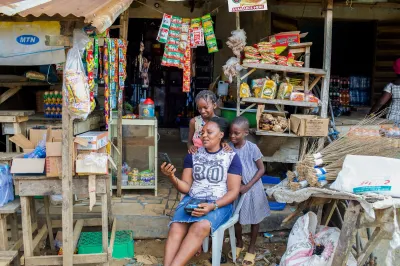Women’s Financial Inclusion: What the Gallup World Poll Tells Us
There is enthusiasm within the financial inclusion community around mobile money’s potential to help women overcome the challenges they face when accessing and using financial services, particularly those related to mobility, time, safety and privacy. Yet limited global access to mobile phones has been seen as one of the biggest obstacles preventing women from benefiting from mobile money. Estimates on access to mobile technology vary depending on measurements used (i.e. subscribers, mobile phone owners or users). Based on unique subscriber data, GSMA estimates that 1.7 billion women in low- and middle-income countries do not own a mobile phone.

Recently released data from the 2016 Gallup World Poll paints an updated picture of women’s phone ownership across more than 140 economies and 97 percent of the world’s adult population. This new data shows that, in fact, 81 percent of women worldwide own a mobile phone, with women’s ownership rate in the developing world as high as 80 percent. While these high rates may come as a surprise, the data does confirm that there is a significant gender gap in mobile phone ownership. It shows a 7 percentage point lag in women’s phone ownership in the developing world, which translates into roughly 190 million women.
What may also be surprising is that regions with some of the highest rates of mobile phone ownership have some of the lowest rates of women’s financial inclusion. In the Middle East, 82 percent of women own a mobile — more than in Latin America, Sub-Saharan Africa and South Asia. Yet only 9 percent of Middle Eastern women are banked. While men in the region also have some of the world’s lowest account levels at 19 percent, the gender gap in account ownership is much greater than the phone ownership gap, suggesting that obtaining a phone is not as significant of a barrier to mobile money as originally thought. The data also helps us better quantify the gender gap by identifying countries and regions with the biggest gender disparities in mobile phone ownership. The vast majority of countries in Sub-Saharan Africa have a double-digit gender gap, and South Asia is the home to the biggest gender gap of almost 60 percent.
For those of us working on women’s financial inclusion, this gender disaggregated data on women’s mobile phone ownership is a welcome addition to the financial inclusion data landscape, helping to quantify the market opportunities for mobile money and identify countries where women lag behind men in their access to this transformational technology. It also forces us to think more deeply about the dynamics behind the numbers driving gender disparities in women’s access to technology and the research that is needed to help translate mobile phone ownership into meaningful financial services for women. It raises interesting questions around what factors are driving the country differential for women’s phone ownership and what conditions can be replicated to encourage women who own mobile phones to use them for financial services.
Answering these questions will require going beyond headline numbers on access and usage data to get at more nuanced issues concerning the barriers and drivers of technology adaptation and use of financial services, including costs, trust and social and cultural norms that inhibit women from taking advantage of these opportunities. More in-depth, country-level surveys such as FinScope and Finclusion Intermedia can help fill these gaps by digging deeper into the social context and underlying barriers. As the initial data from Gallup indicates, the picture of women’s use of mobile phones for finance is not straightforward. It will require a deeper understanding of the market dynamics at play if we are to effectively leverage the full potential of this technology for women’s financial inclusion.




Comments
This are wonderfull
This are wonderfull
Add new comment